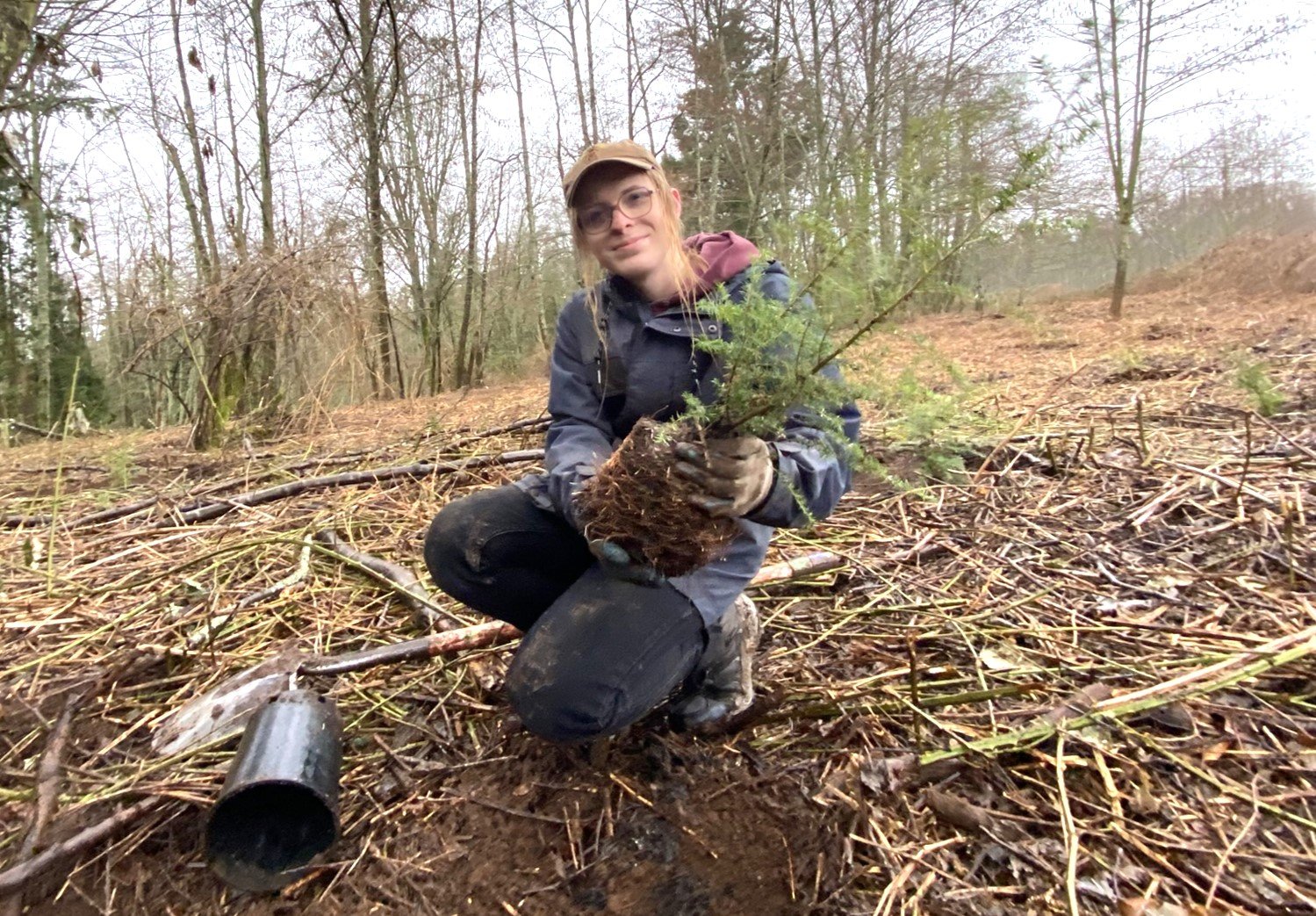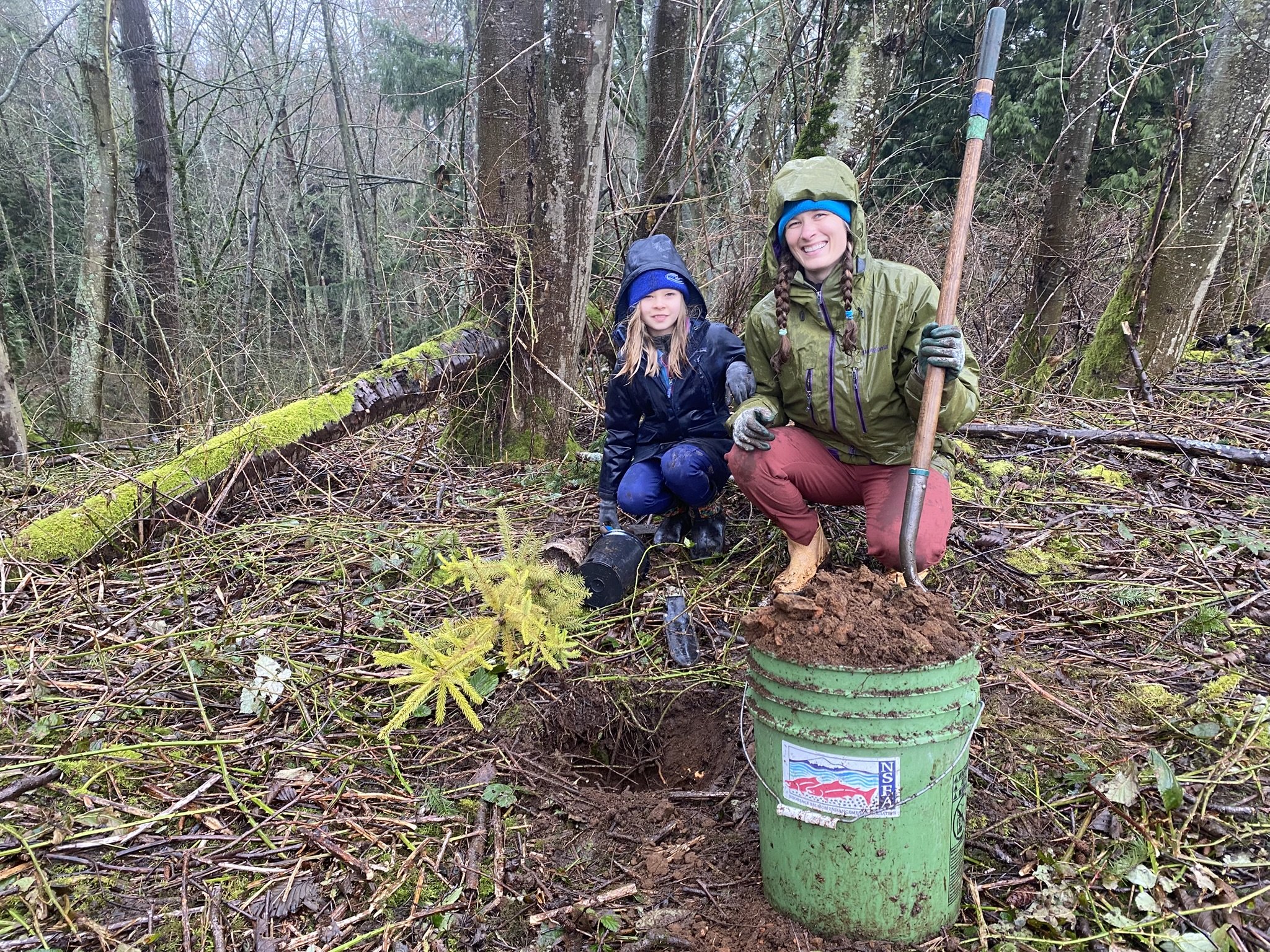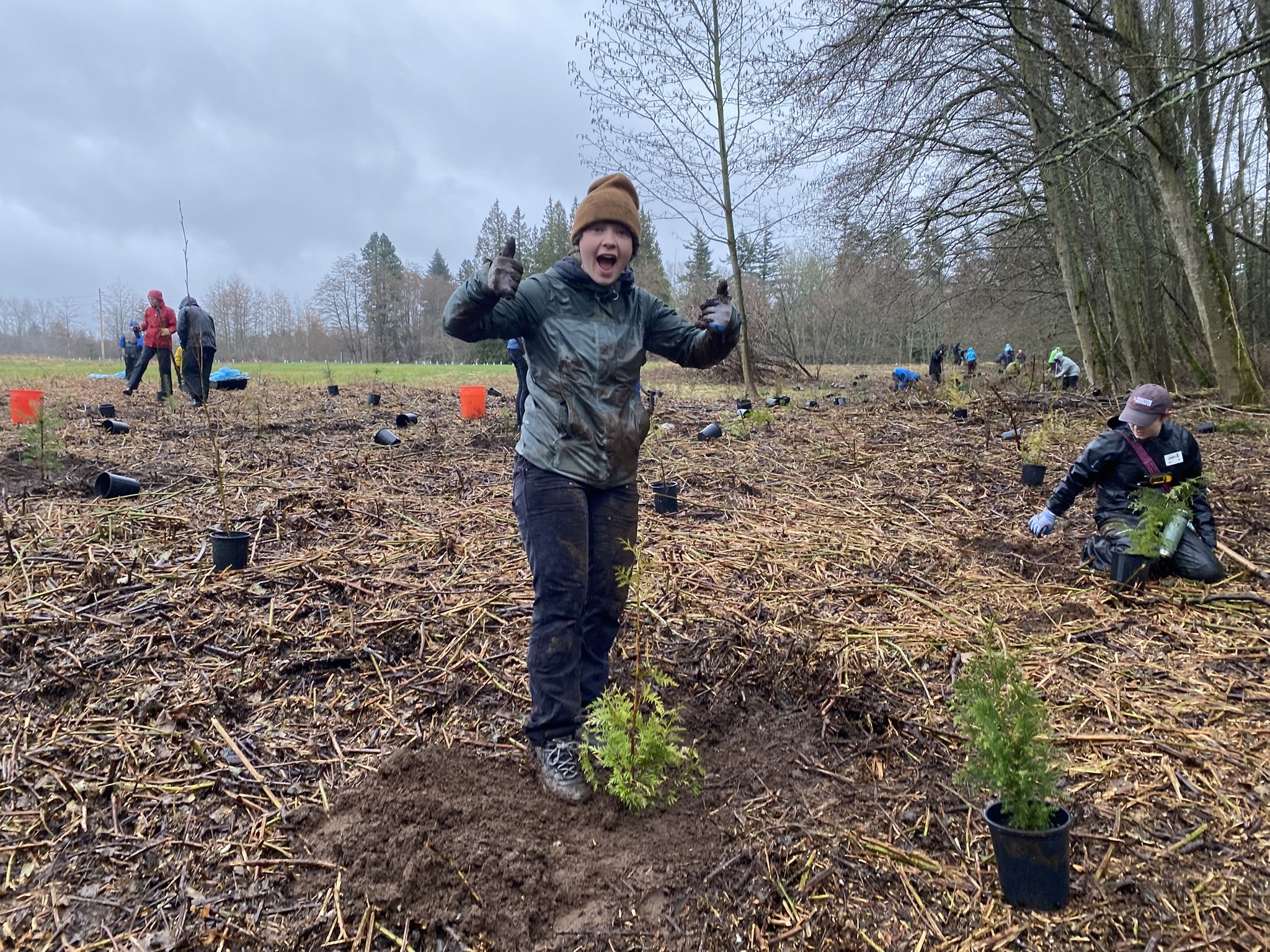By Sarah Brown, Stewardship Program Manager
Winding its way from Lake Terrell to the tideflats of Birch Bay, Terrell Creek cuts a quiet but vital path through the landscape of western Whatcom County. The creek flows through a tapestry of agricultural fields, neighborhoods, and even light industrial zones before reaching the bay. Though often overlooked, this modest waterway plays an outsized role in supporting local wildlife—including coho and chum salmon, steelhead, resident trout, and over 170 bird species. Its waters nourish wetlands and feed shellfish beds in Birch Bay, making Terrell Creek a linchpin in the ecological health of the region.
For the Nooksack Salmon Enhancement Association (NSEA), Terrell Creek has long been a source of both challenge and inspiration. Our restoration work began here in the late 1990s with a series of fish passage barrier removals that helped reopen critical habitat for salmon. Since then, our relationship with the creek has deepened both literally and figuratively.
A Shared Commitment
Terrell Creek is more than a restoration site; it’s a place where partnerships thrive. NSEA has joined forces with bp Cherry Point1 and the grassroots group Chums of Terrell Creek2, plus government organizations like Whatcom Conservation District (WCD)3 and Birch Bay Watershed and Aquatic Resources Management District (BBWARM)4 to take on larger-scale habitat restoration. These partnerships have continued to grow over the years, drawing in a wide circle of stakeholders including schools, scout troops, BP employees, and local residents eager to lend a hand.
Our collective work has focused on removing invasive vegetation, such as Himalayan blackberry and reed canary grass, and replacing them with native trees and shrubs that stabilize streambanks, filter runoff, and provide shade to cool the water for fish. Many of the project sites have become staples in our annual restoration calendar, offering the public an ongoing opportunity to get their hands dirty for a good cause.
From 2017 to 2024, 694 volunteers joined us along Terrell Creek. Together, they planted more than 4,400 native plants and contributed over 2,000 hours of hard work. In 2025 alone, two more events brought in 33 volunteers who planted an additional 463 native trees and shrubs.
Lessons from the Land
Terrell Creek has become one of NSEA’s longest-running projects not only because of the ecological need—but also because of what it teaches us. Every year, this creek reminds us of the values that drive our work:
Tenacity – Restoration isn’t always glamorous. It often means braving cold rain, squelching through knee-deep mud, and wrestling with stubborn invasive vegetation. Yet volunteers and staff return time and again, undeterred and full of purpose.
Patience – Equipment gets stuck. Weather shifts plans. Plants take years to mature. Real change in a watershed doesn't happen overnight—but every planting and every partnership moves us closer.
Gratitude – Despite the challenges, Terrell Creek offers constant moments of beauty and connection: eagles circling overhead, the smell of fresh mulch, plentiful worms, and shared laughter between strangers-turned-teammates. We’re grateful for the land, the wildlife it supports, and the people who choose to care for it.
Looking Forward
As we continue our work on Terrell Creek, we’re reminded that this is more than restoration—it’s relationship building. With the land, with the water, and with each other. The creek has become a living classroom, a community gathering space, and a symbol of what’s possible when people commit to caring for their corner of the world.
Whether you’ve planted trees with us once or returned season after season, your fingerprints are on this landscape. And as Terrell Creek flows onward to Birch Bay, so does the legacy of everyone who has helped shape its course.
1 bp’s Cherry Point refinery can process about 250,000 barrels of crude oil per day and is the largest supplier of jet fuel to the Seattle and Portland international airports. It was also the first Northwest refinery able to co-process renewable diesel made from biomass-based feedstocks. Source.





